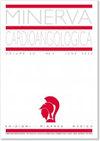Procedural sedation and analgesia for percutaneous high tech cardiac procedures.
Q3 Medicine
引用次数: 2
Abstract
The interest in percutaneous high tech cardiac procedures has increased in recent years together with its safety and efficacy. In fragile patients, procedural sedation and analgesia are used to perform most of the procedures. General anesthesia remains the technique of choice during the team learning curve and might be required in selected patients or in emergent situations. Despite the high costs of percutaneous high tech cardiac procedures, the decrease in length of hospital stay, rate of intensive care admission and complications, balance the increase in devices costs. In fragile patients who undergo percutaneous high tech cardiac procedures, the primary role of the anesthesiologist is to prevent the need forpostprocedural intensive care unit and complications rate. Starting from the experience of a large university third level hospital we identified the eight most commonly performed contemporary percutaneous high tech cardiac procedures (ventricular tachycardia and atrial fibrillation ablation, protected percutaneous coronary intervention, transcatheter aortic valve implantation, MitraClip®, percutaneous patent foramen ovale closure, left atrial appendage closure, and dysfunctional lead extraction), discuss the role of procedural sedation and analgesia in this setting, and explore future perspectives.经皮高科技心脏手术的镇静和镇痛。
近年来,对经皮高科技心脏手术的兴趣随着其安全性和有效性而增加。在身体脆弱的病人中,大多数手术都使用程序性镇静和镇痛。在团队学习过程中,全麻仍然是首选技术,在特定的患者或紧急情况下可能需要全麻。尽管经皮高科技心脏手术的费用很高,但住院时间、重症监护住院率和并发症的减少抵消了设备成本的增加。在接受经皮高科技心脏手术的虚弱患者中,麻醉师的主要作用是防止术后重症监护病房的需要和并发症的发生率。从一家大型大学三级医院的经验出发,我们确定了八种最常用的当代经皮高科技心脏手术(室性心动过速和房颤消融、经皮保护性冠状动脉介入治疗、经导管主动脉瓣植入、MitraClip®、经皮卵圆孔未闭闭合、左心房附件闭合和功能障碍铅提取)。讨论程序性镇静和镇痛在这种情况下的作用,并探讨未来的前景。
本文章由计算机程序翻译,如有差异,请以英文原文为准。
求助全文
约1分钟内获得全文
求助全文
来源期刊

Minerva cardioangiologica
CARDIAC & CARDIOVASCULAR SYSTEMS-
CiteScore
1.60
自引率
0.00%
发文量
0
审稿时长
>12 weeks
期刊介绍:
A Journal on Heart and Vascular Diseases.
 求助内容:
求助内容: 应助结果提醒方式:
应助结果提醒方式:


